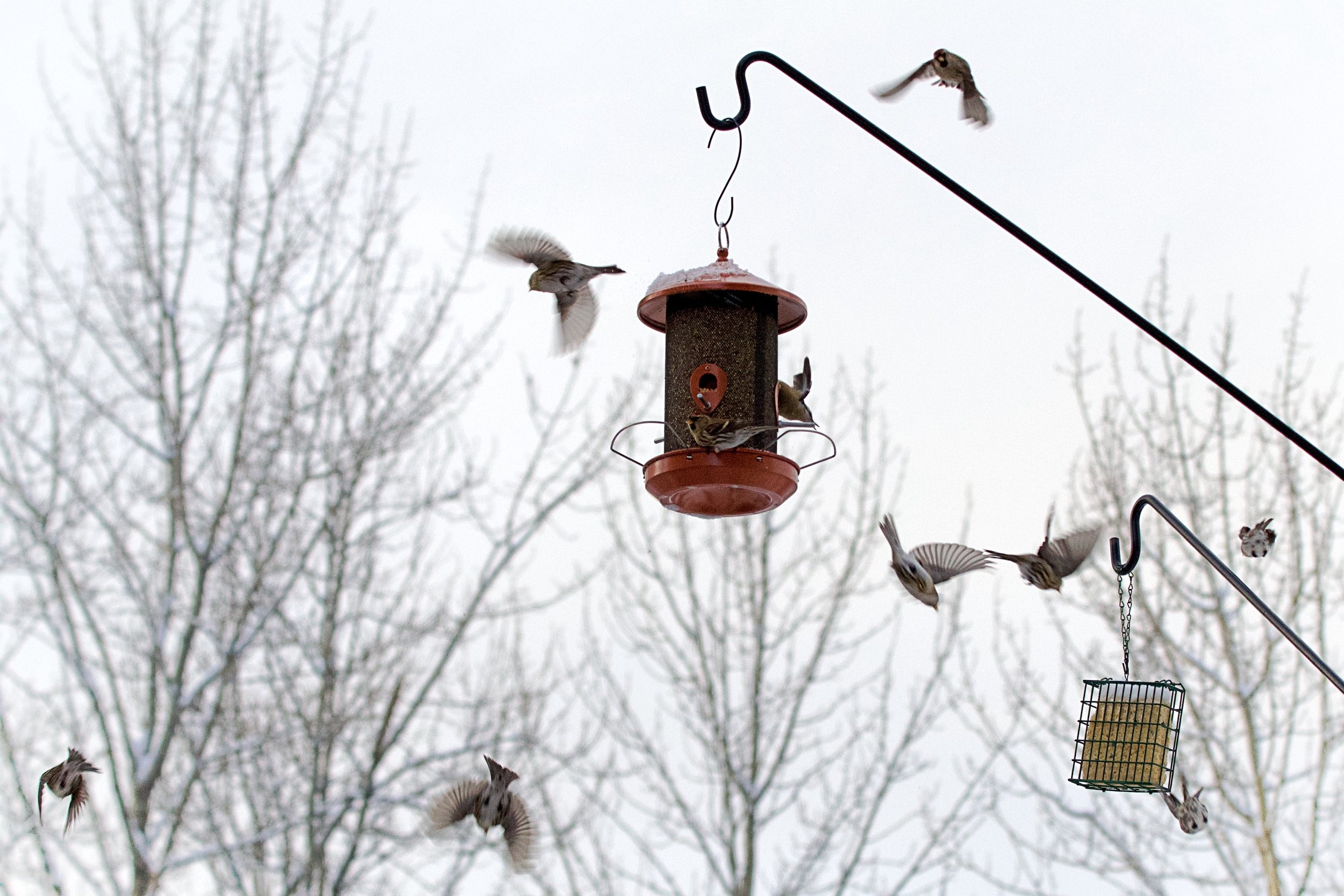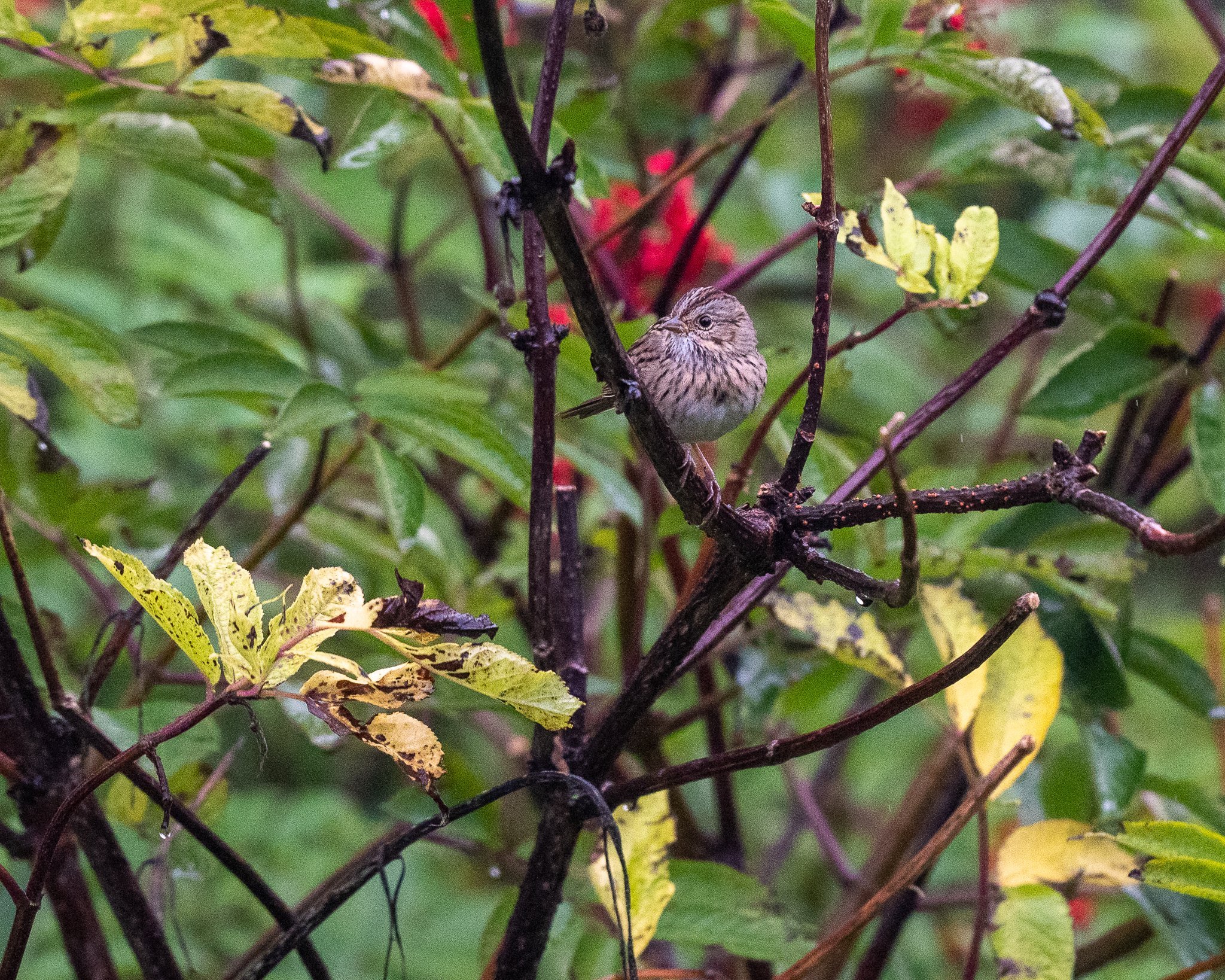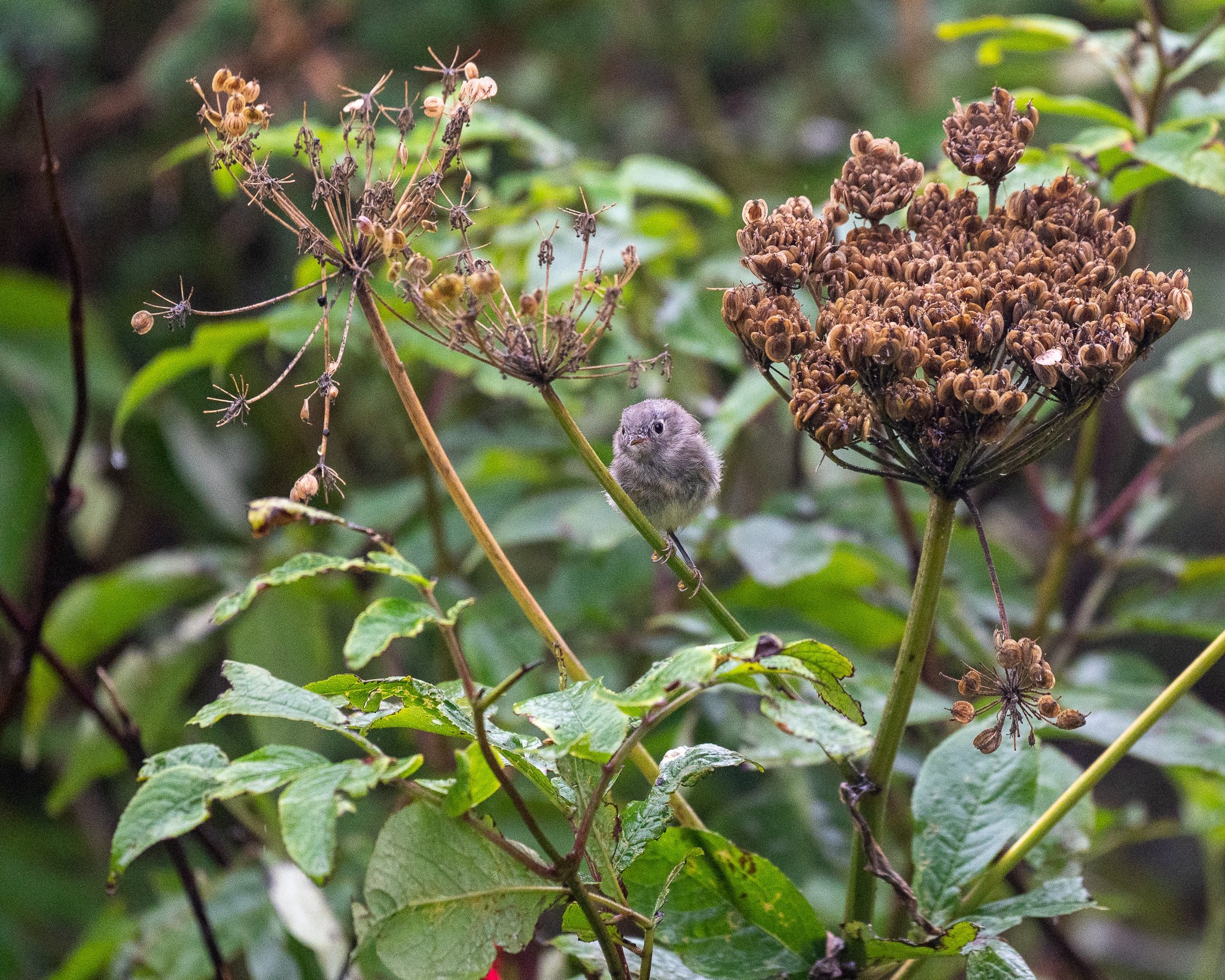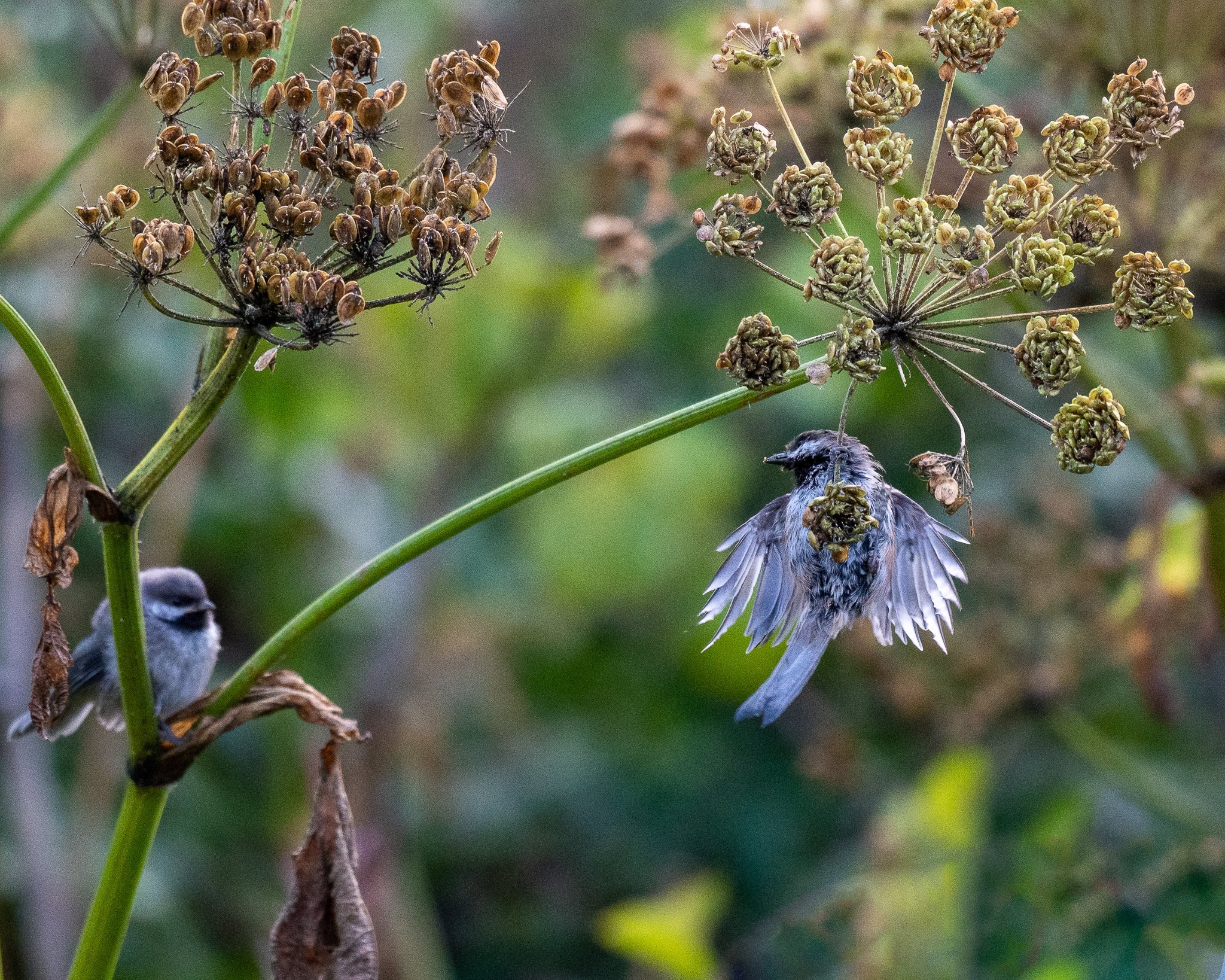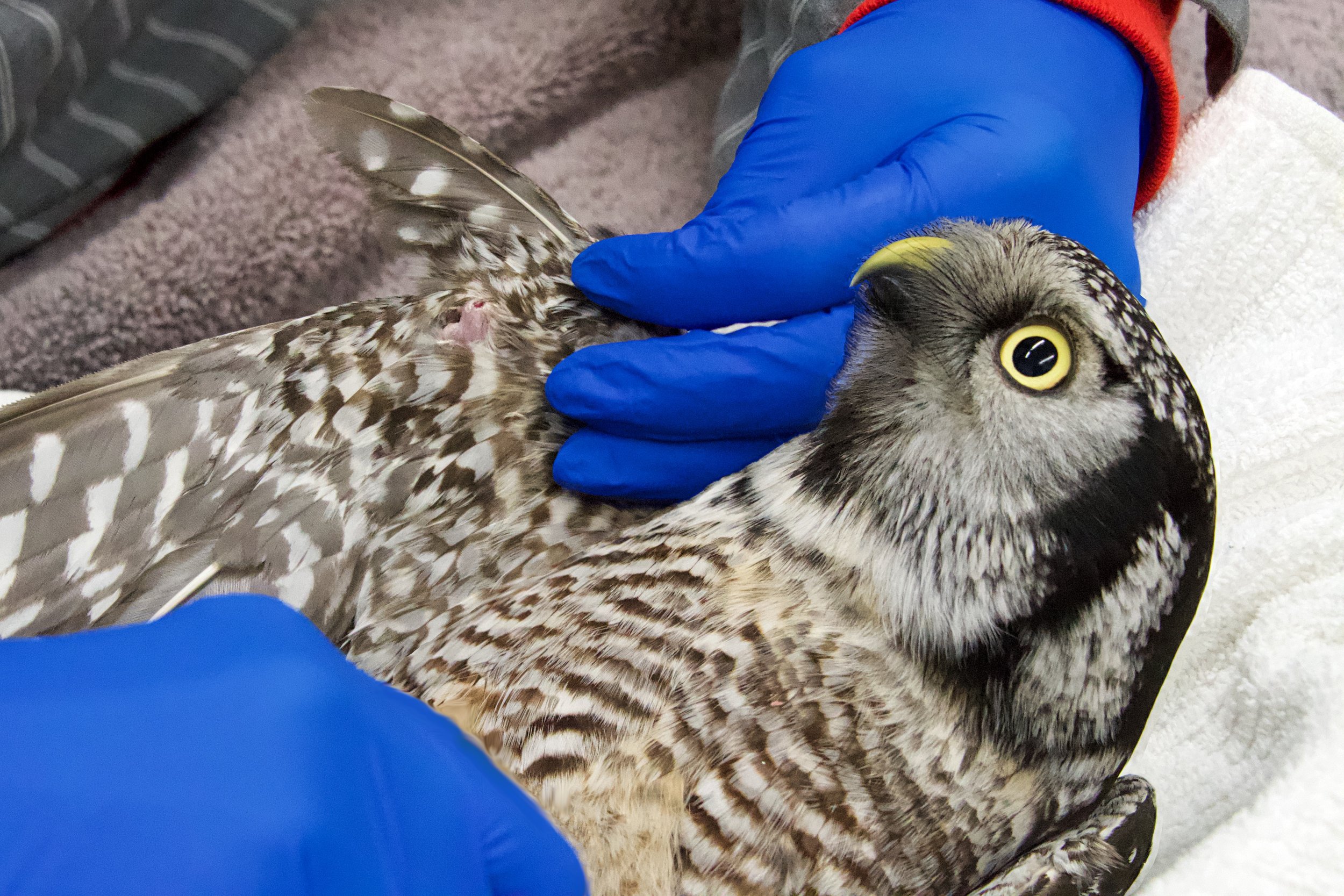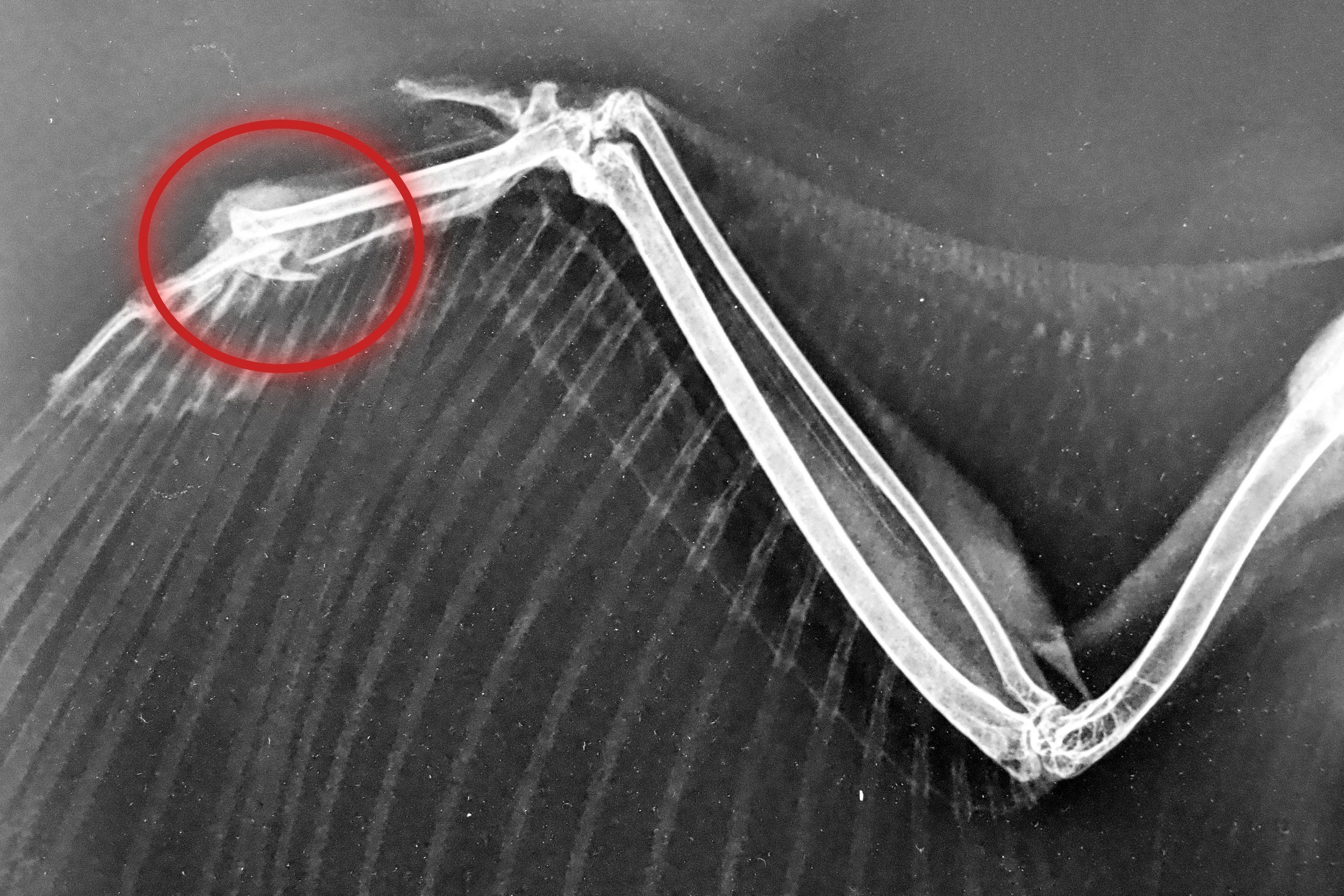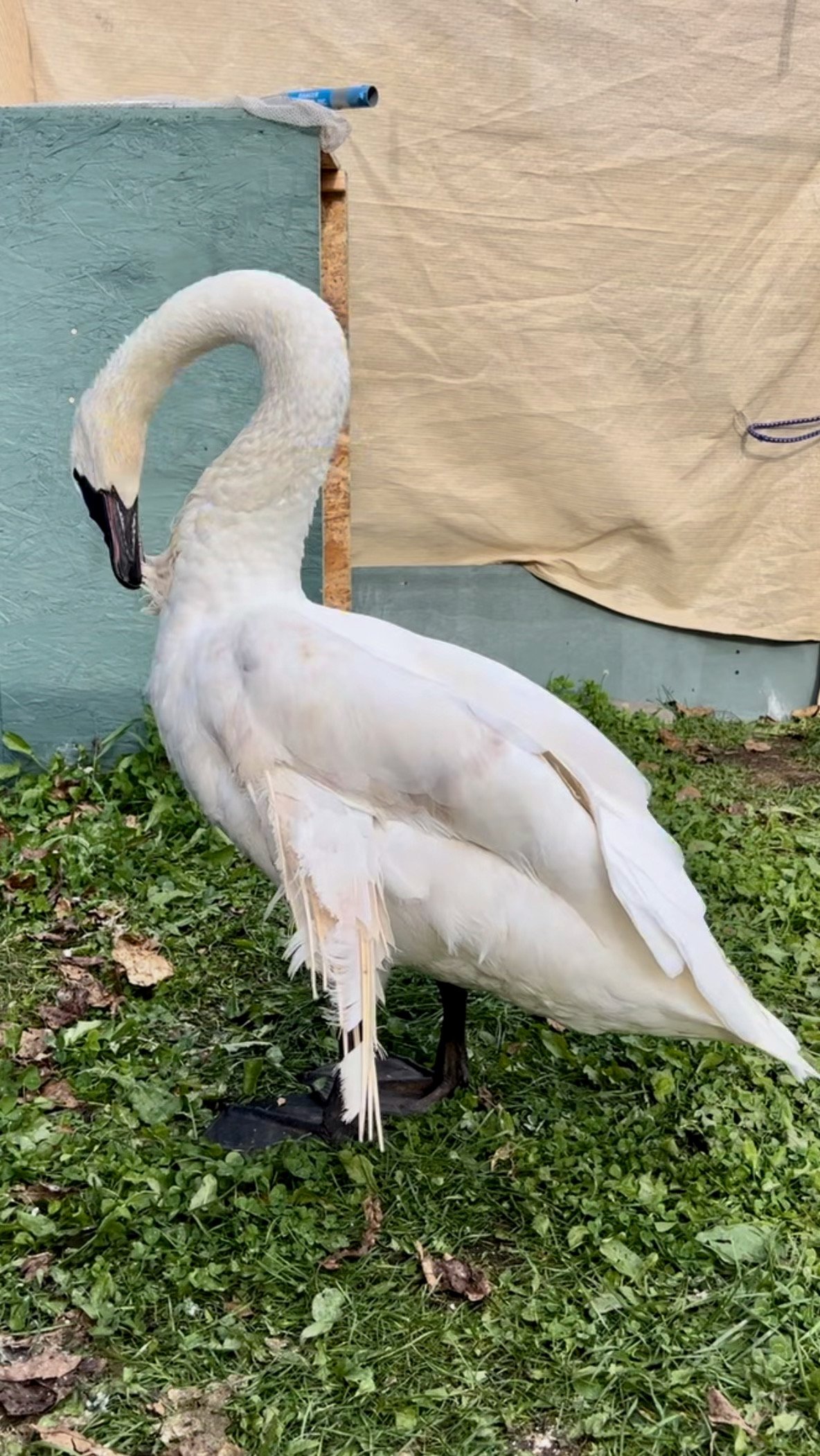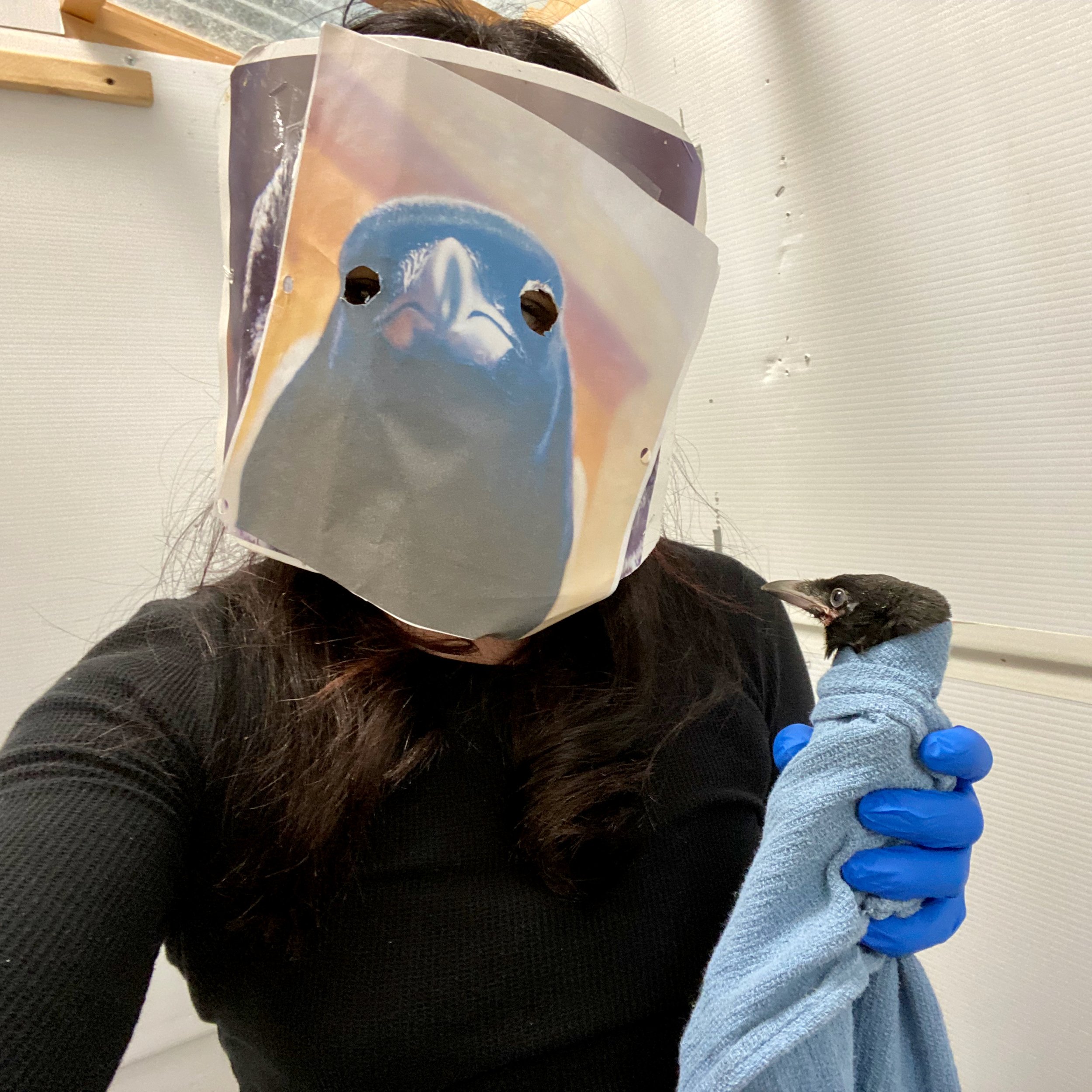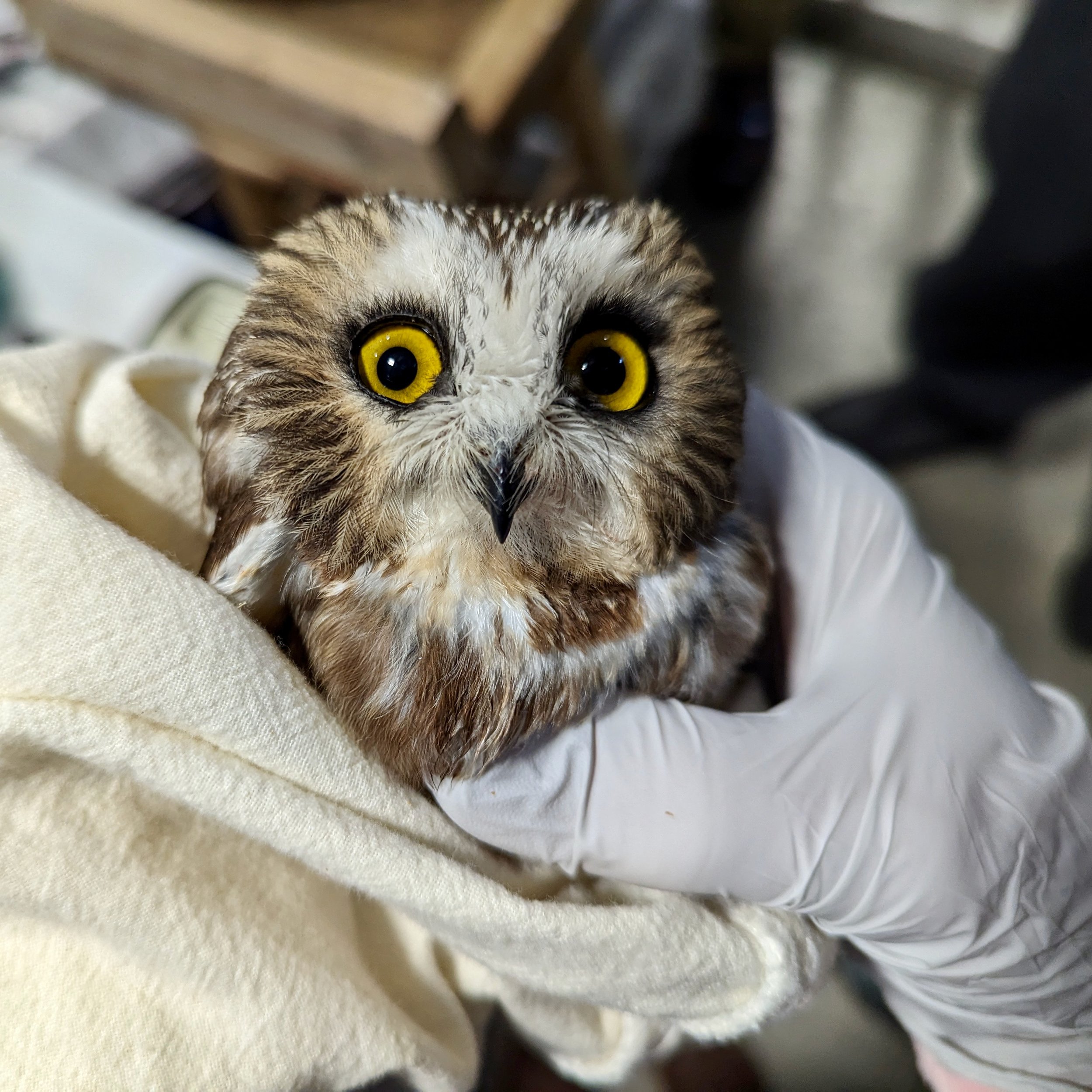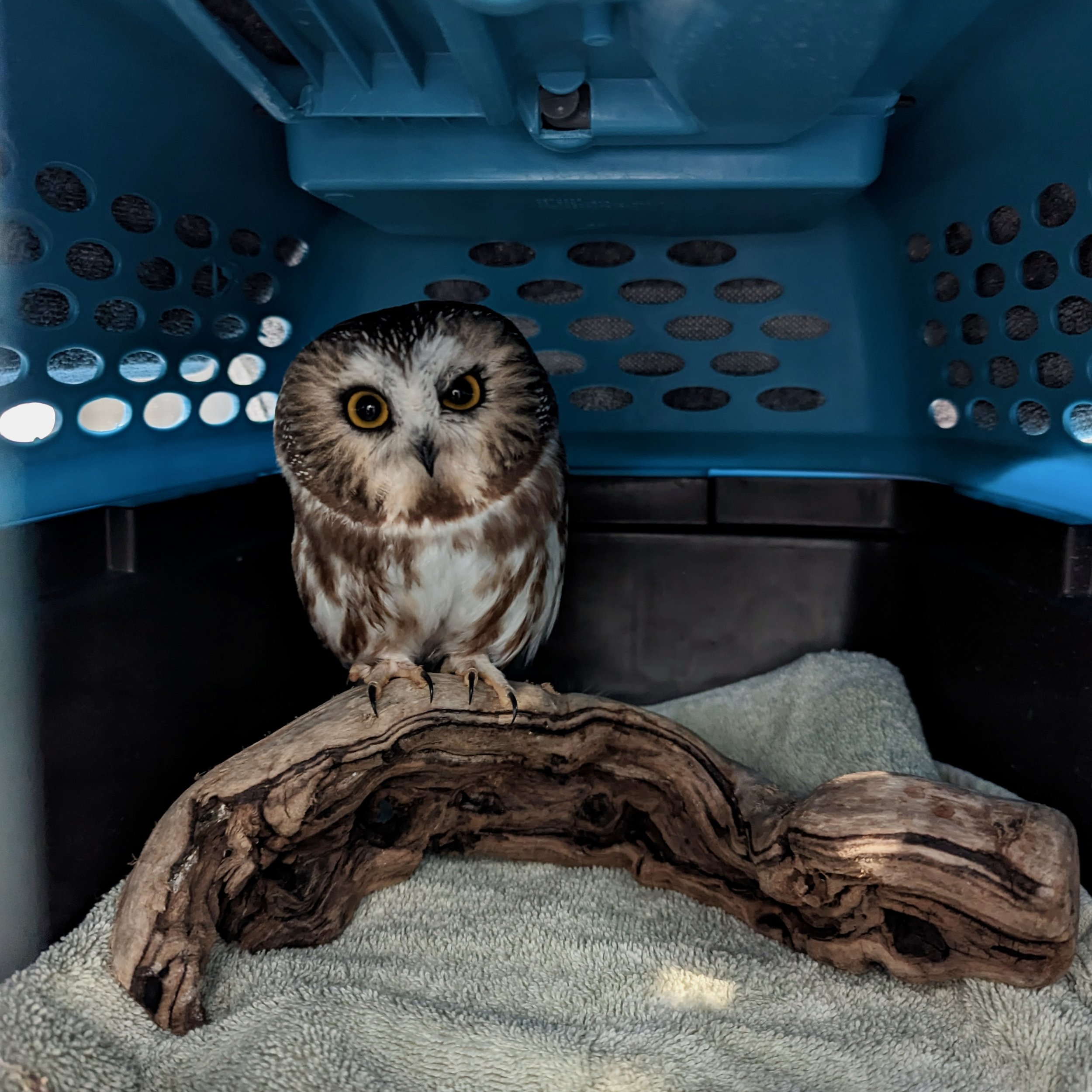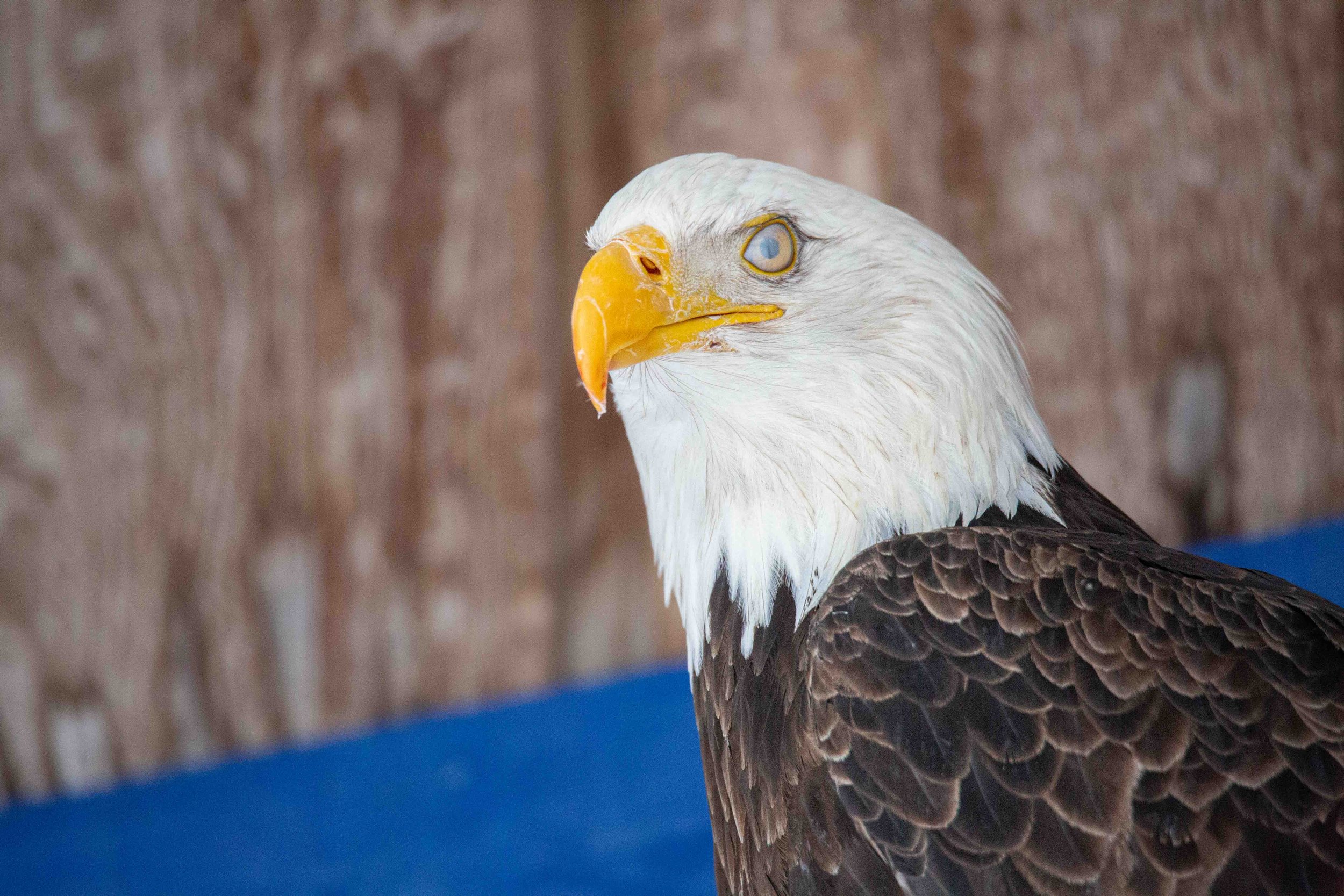Author: J.K. Ullrich, Bird TLC volunteer
BirdTLC couldn’t support its patients and ambassador birds without a dedicated crew of humans. Get to know one of them in this Q&A session with our Rehabilitation Program Coordinator, Katie Thorman. She’ll discuss her surprising journey into bird rehabilitation, her favorite patients, and the rescue of one very sticky raven!
How did you get into wild bird rehabilitation?
I started my career in a totally opposite direction, thinking I wanted to work in the hospitality industry. I lasted about three months at a luxury hotel and I hated it and I wanted to do something else entirely. I had always loved being outdoors and wildlife, but the idea of a science degree sounded overwhelming—I was terrified of the chemistry and calculus, and hadn’t been a great student in high school. I finally decided to just go for it. I quit my job and started a degree in biology.
From there, I started looking at how I could get involved in more hands-on wildlife experience. I found the Savannah Wildlife Rescue (SWR) and applied to volunteer. After my first shift, I was hooked! SWR was a seasonal wildlife rescue that mainly dealt in rehabbing orphaned baby wildlife. I spent many hours helping care for raccoons, possums, squirrels, white-tailed deer, and river otters. I spent two and half years with SWR, thinking “this is something I can see myself doing forever.”
Midway through the third year, in July 2020, my husband and I found out we were moving to Alaska. While I was researching wildlife rehabilitation opportunities in Alaska, my search led me to Bird TLC. I had always loved birds of prey and it was an area I didn’t have experience in, so I thought I would give it a try. My first shift at Bird TLC was in August 2021, and once again, I became hooked! I volunteered in the rehabilitation clinic, which eventually led to a job offer in June 2022. Working somewhere like Bird TLC was (and still is!) my dream job. I now work full-time as the rehabilitation program coordinator as well as with the education team, helping care for our wonderful collection of ambassador birds.
Are there unique challenges and rewards in working with birds, as opposed to other animals?
There are so many different types of birds! The diversity among species can sometimes be challenging, especially if you have never had a certain type of bird in a rehabilitation setting before. That being said, this is something I also love about wild bird rehabilitation: there is always something new to learn.
Katie assists Dr. Karen Higgs with the examination of a Great Horned Owl.
There is a special kind of magic around being able to help a bird regain their flight. Because we see birds of all species in our day-to-day lives, it’s easy to become desensitized to just how uniquely adapted they are to fly. To help restore that and see the bird you spent your time caring for take flight at the finish line is so rewarding.
Katie releases a rehabilitated juvenile Bald Eagle.
Tell me about one of your most memorable cases.
My very first day as part of the staff, I got a call about a raven stuck to the top of a restaurant’s roof. After going on top of the roof, I found a huge grease pit that this raven had likely flown into. The grease acted as an adhesive, and the raven likely became covered after struggling to get out. I brought him back to the clinic and, after many baths and de-grease treatments, he was released without damage to his feathers.
Is there a species you like to work with the most or the least?
Each species is unique and interesting! If I had to pick, I really enjoy my time with bald eagles and northern saw-whet owls. Bald eagles are the raptor we see the most, and I have gained a lot of experience in caring and handling these birds. With that experience has come an appreciation and love for the species.
Saw-whet owls are my other favorite because how can you not love a tiny owl? They are tiny, but mighty! Owls will clack their beaks when they feel threatened and want you to stay away from them. When you have to handle a saw-whet owl for medical treatments, their beak clacks sound like a small and adorable typewriter. While they are doing their best to be fierce and tough, they often come off looking very silly and cute. These behaviors have only endeared them to me more.
Katie dons an owl mask to feed an orphaned Northern Saw-whet Owl.
What can people do to help wild birds thrive?
There are lots of things!
Keep your cat indoors
Dimming lights and outfitting windows with visual patterns to prevent window strikes can be helpful for our songbirds, especially during migration.
Throw away trash and fishing lines to prevent entanglements
If you are a hunter, switch to lead free ammunition, avoid the use of lead sinkers when fishing, and bury entrails when field-dressing a carcass.
Plant native plants in your garden
If you have chickens, make their living area predator proof. We’ve had raptors get tangled up in netting—I suggest wire mesh instead.
Stay informed about what is going on in your community! It’s a great way to get involved in conserving important wildlife habitats in your area.







